
 |
Eager Space | Videos by Alpha | Videos by Date | All Video Text | Support | Community | About |
|---|

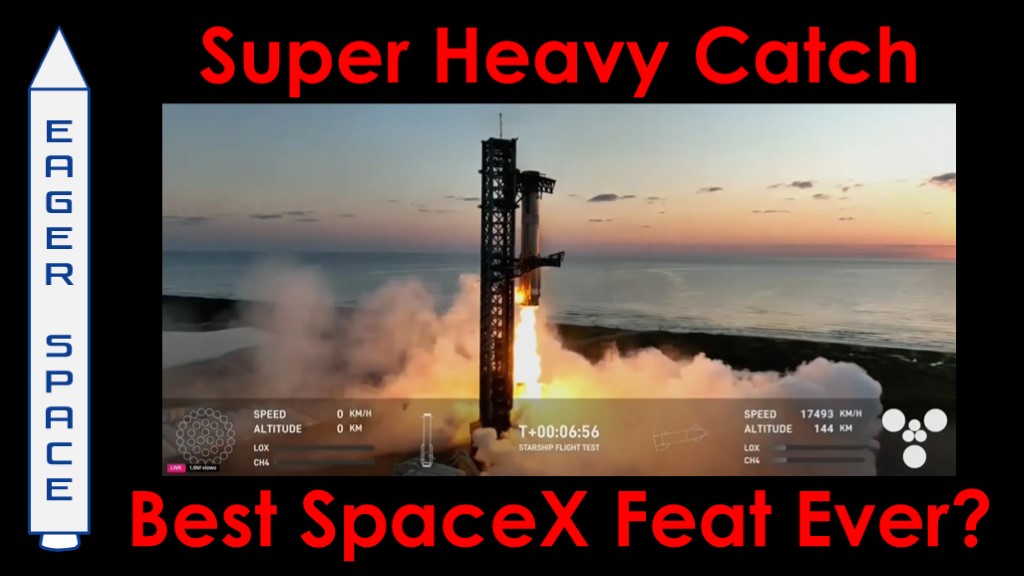
https://www.youtube.com/watch?v=rJr360r_LfQ
Proton M launch failure, July 2013
https://www.youtube.com/watch?v=ycRVAcZC5R4
https://www.youtube.com/watch?v=EJ5__1PPgNQ
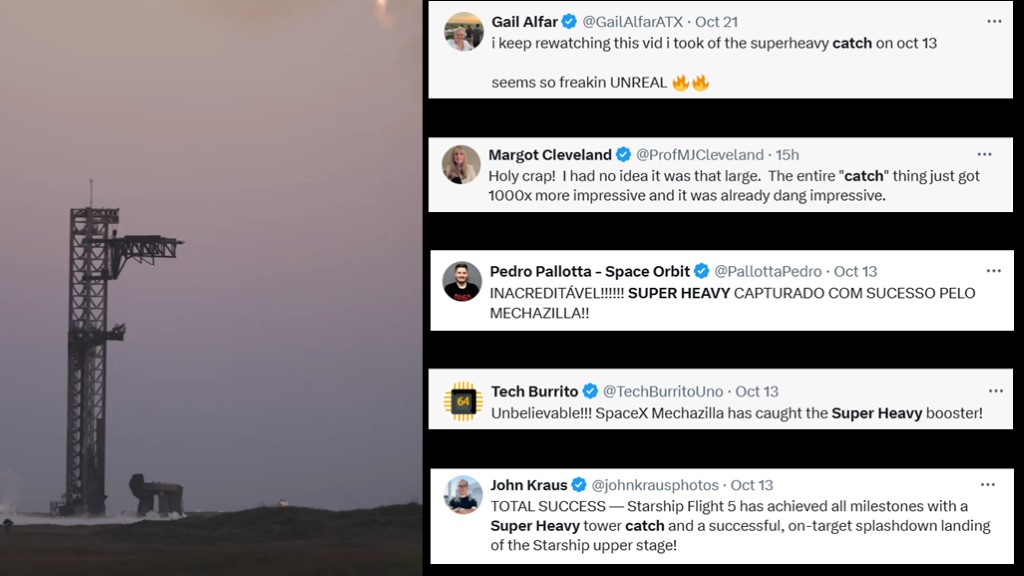
When the super heavy booster from flight 5 came casually cruising in and was caught by the tower, the space internet went wild
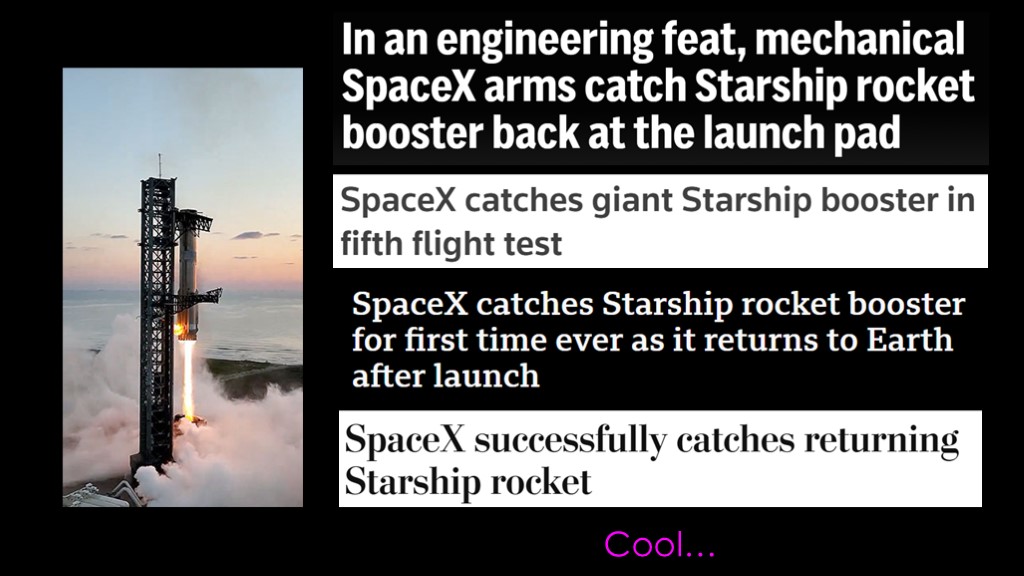
And like few space things do, it leaked out of the space community and showed up big in the mainstream news, such as
The associated press
Reuters
BBC News
and even Jeff Bezos' Washington post.
My response was a "cool". Which will probably annoy some of you, but this was never one of the most challenging parts of the starship program, and my prediction was an 80% chance of success if they got to the start of the landing burn.
So, "cool and important for the program going forward" sums up my opinion.
But that would make a very short video, so I've decided to compare this accomplishment with something from SpaceX's past.
I want to talk about how the super heavy catch compares to the first droneship landing of Falcon 9.
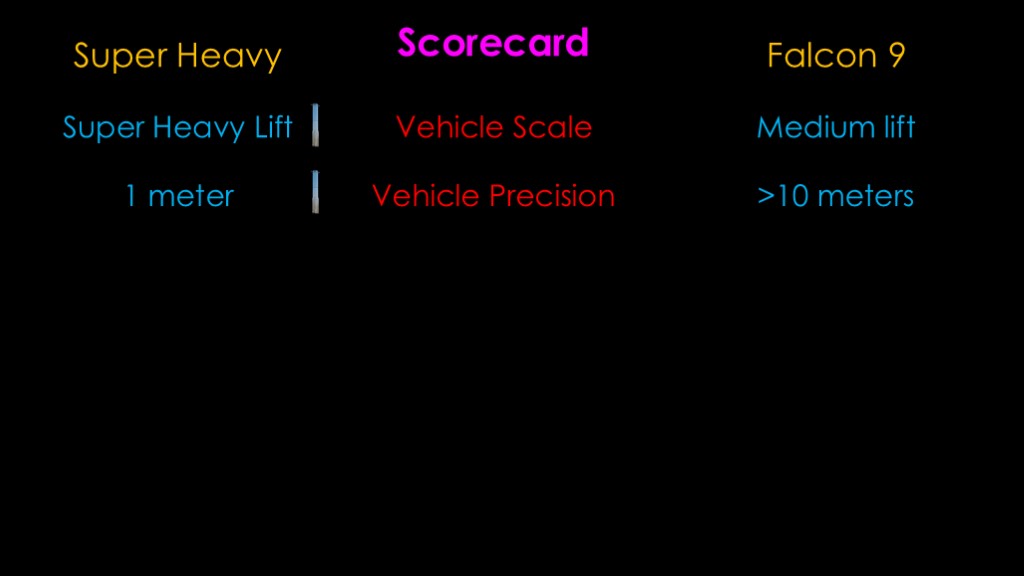
To do that we'll need a scorecard.
We'll start by looking at vehicle scale, and super heavy is a super heavy lift rocket, while Falcon 9 was a medium lift rocket. A larger vehicle is harder to build, so that's one for super heavy being harder to do.
The precision control required is what most people were paying attention to for the super heavy catch; it needed solid control within a meter to be caught, while the broad deck of the drone ship gives at least a 10 meter margin of error for a successful landing. That's another win for super heavy in terms of difficulty.
But maybe not.
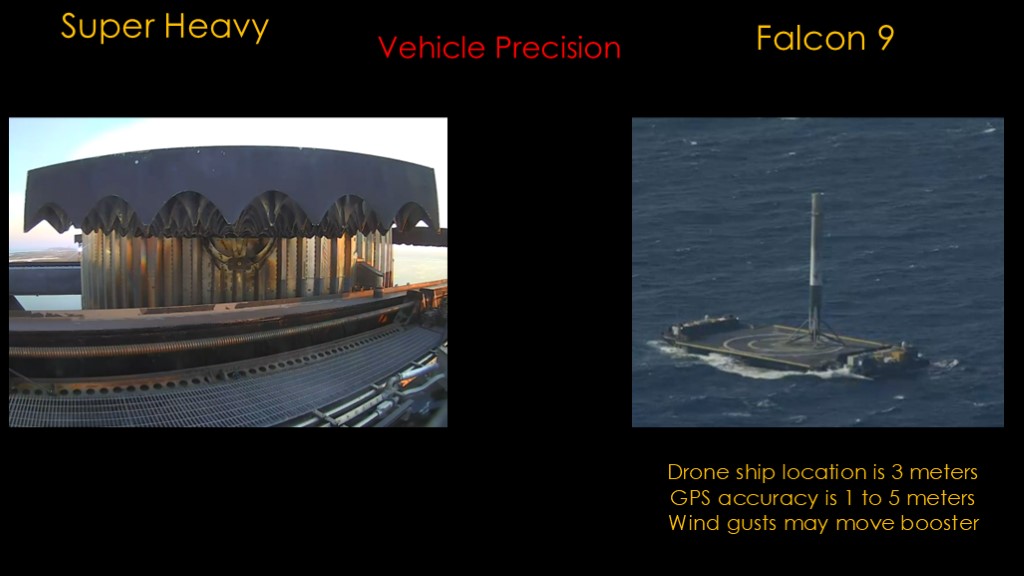
The drone ship thrusters are capable of maintaining location within 3 meters, and both the drone ship and the booster are using GPS which is accurate to perhaps 1 to 5 meters. And wind gusts may push the booster around.
That means the droneship platform isn't huge compared to the available precision, and you can see from this picture that sometimes the landing is quite a bit off center. There's a reason the droneship platforms are big.
This starship image shows the super heavy support pins sitting on top of the landing chopsticks. The booster needs to have the proper orientation and be pretty close to the right position - say within a meter - for the landing to be successful. That requires much more precision than the Falcon 9 booster.
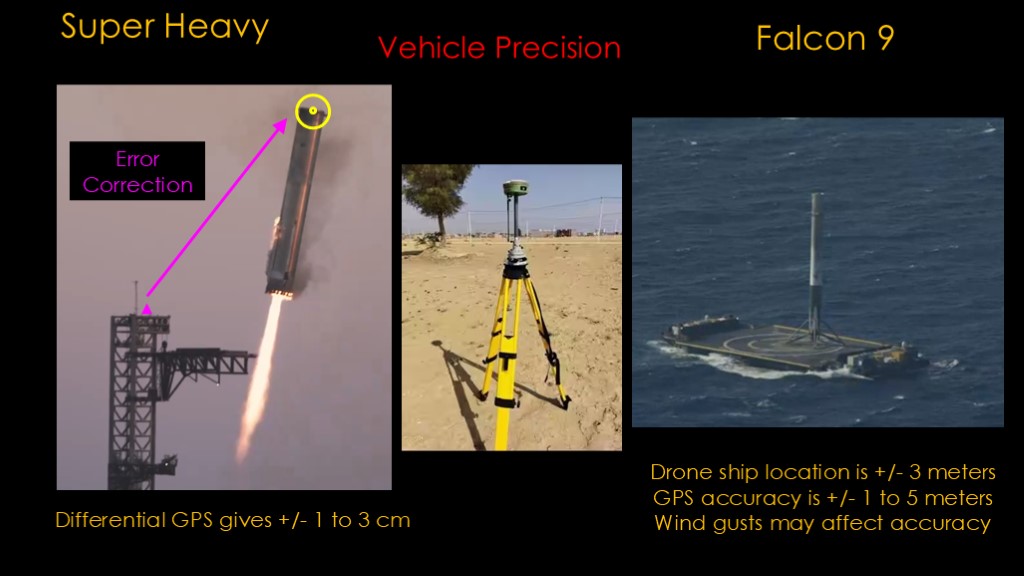
GPS might be up to 5 meters off, so the position fix that the booster is getting could be anywhere within the yellow circle.
That's not going to work.
Luckily, there's a more advanced technology available.
There is a fixed GPS receiver on top of the tower that knows exactly where it is and it also knows where GPS is saying that it is. It can compare those two values and send an error correction to the booster that essentially says "take what GPS is telling you and add the following corrections to get your actual location".
This technique is known as "differential GPS" and is commonly used in applications that require high precision - if you've seen surveyors in your area, they are very likely using differential GPS.
Differential GPS can give positional locations plus or minus 1 to 3 centimeters.
What this means is that Super Heavy doesn't really have a harder job getting itself in the proper position than Falcon 9 does.
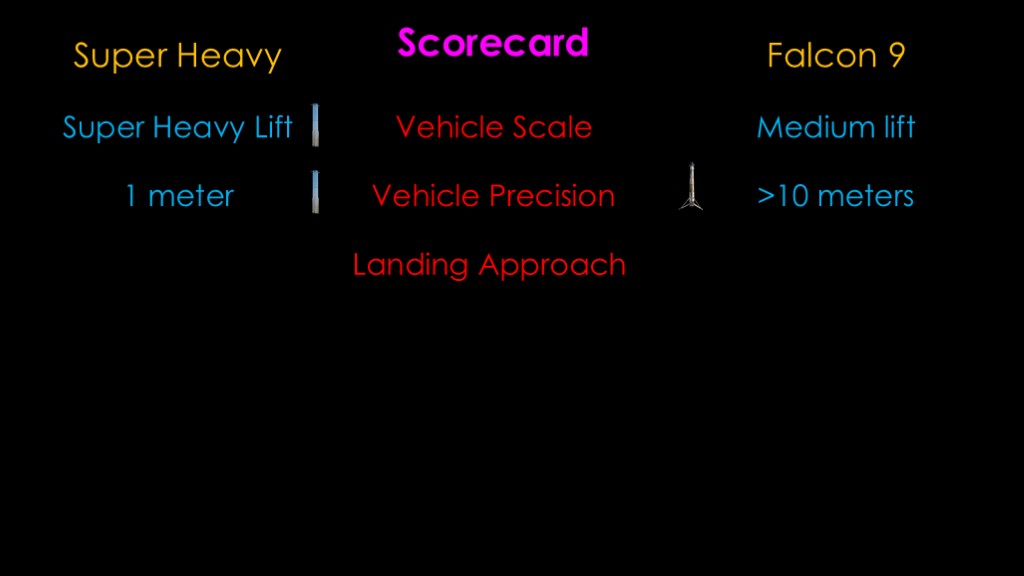
So it turns out that super heavy can pretty easily get the precision that it needs because it's being caught by a fixed tower, so I'm going to say that getting the required precision is equally difficult for both boosters.
Next comes the landing approach.
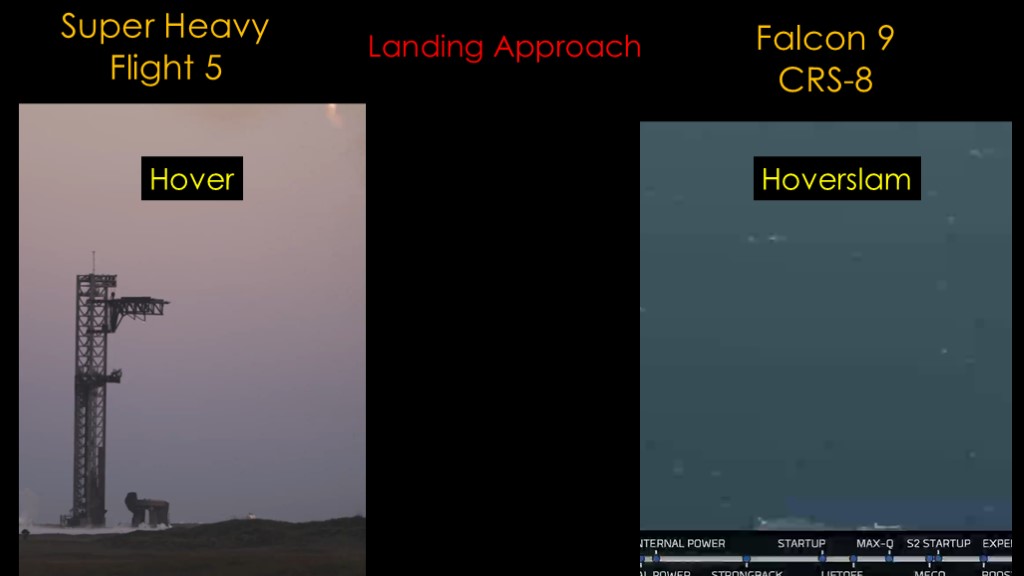
We'll look at two videos. The first is the catch of super heavy from flight 5, and the second is the first droneship landing of falcon 9 on the CRS-8 mission way back in April of 2016.
I've synchronized the videos to make the differences more apparent. Both will start one booster-length above the final position.
(run video)
You might want to rewind and watch that a few times.
The Falcon 9 lands at a relatively constant rate. It has to do this because the minimum thrust of the Merlin 1D engine on the Falcon 9 is greater than the weight of the booster when landing, and therefore the booster cannot hover. This trajectory is known as a "hoverslam", as the booster has to slow down at exactly the rate that allows its vertical velocity to hit zero when the legs touch down, and that limits any positional adjustments that it can make.
Super heavy can hover, so as it gets close to the catch location it slows *way* down and spends about 3 seconds fine-tuning its final location.
The hoverslam requirement makes landing the Falcon 9 harder than catching the super heavy.
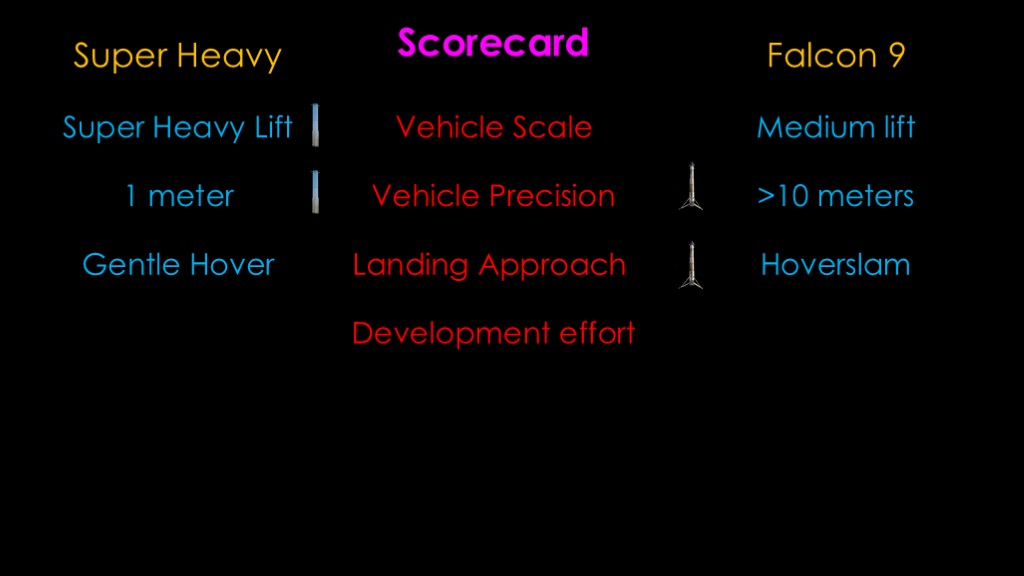
The hoverslam is the more difficult approach and Falcon 9 wins the landing approach difficulty competition.
There was also a big difference in development effort.
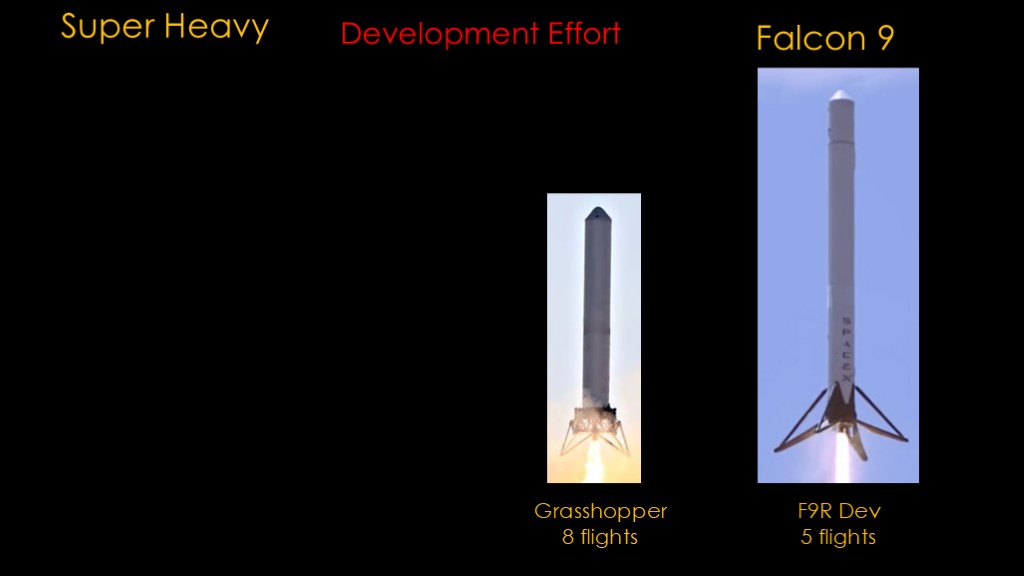
SpaceX built 2 development vehicles for Falcon 9 reuse.
The grasshopper test vehicle flew 8 flights, and the full sized F9R dev vehicle flew 5 flights.
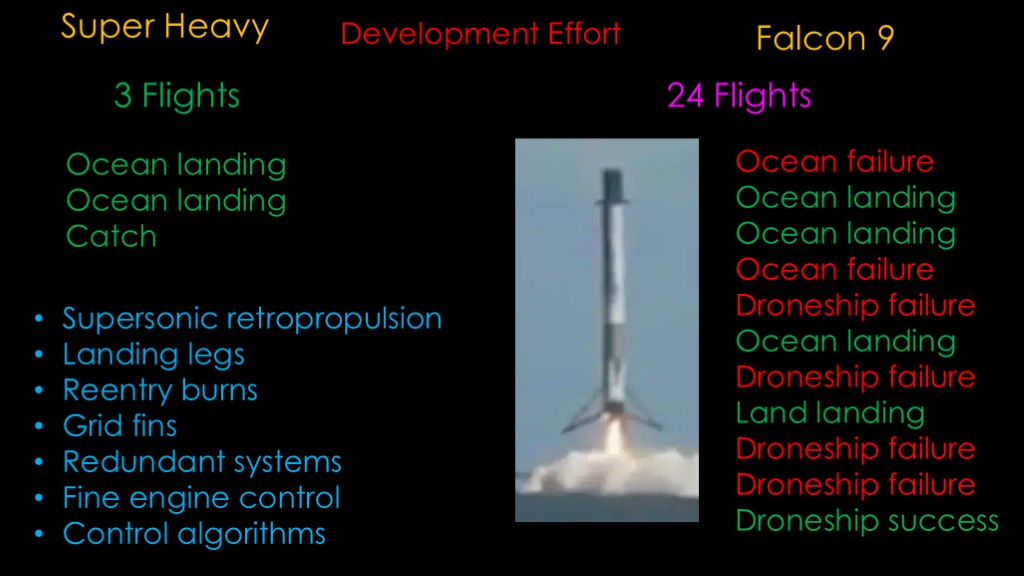
SpaceX continued development with boosters that had already completed their flight missions for customers. They had a lot of work to do, and it wasn't until the 11th attempt that they landed on the droneship successfully.
Adding in the 13 flights of the two development vehicles, that's 24 flights to get to the goal. Along the way they developed a host of technologies that were required to achieve the final goal, and many of these were things that had never been done before.
Super heavy leaned heavily on everything SpaceX learned from Falcon 9, and it only took two successful ocean landings and then a successful catch, for a total of 3 flights.
SpaceX didn't do any tests like grasshopper or F9R Dev with super heavy because they didn't think they needed them, and they were correct.
It was much, much harder to get to the first Falcon 9 droneship landing than the first Super Heavy catch.
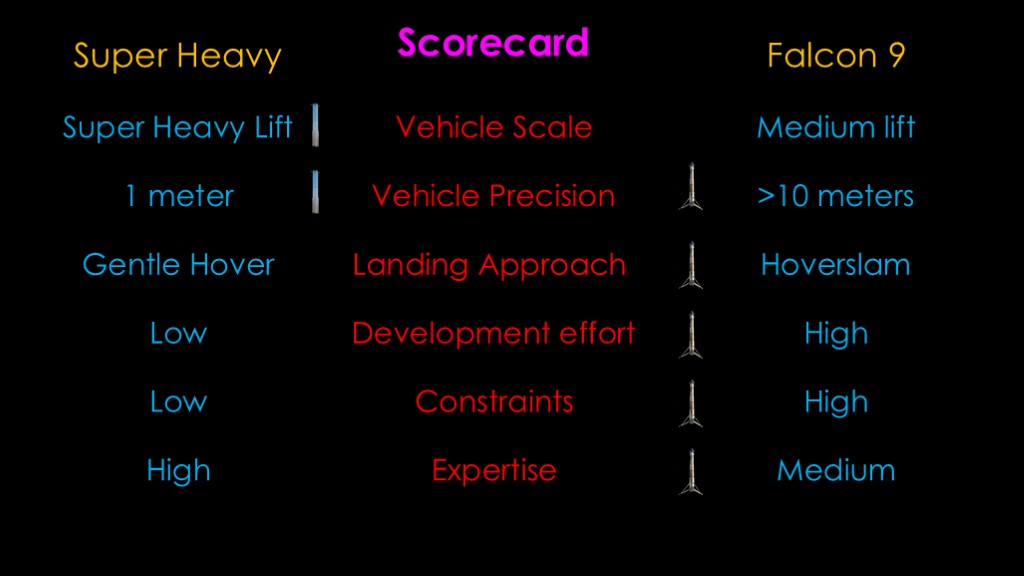
I'll label the development effort for Falcon 9 high and the development effort for Super heavy low, and Falcon 9 wins this one easily.
Falcon 9 had the added constraint that they had a requirement to keep flying missions without failure to bring in the money that was keeping SpaceX going, while the Super Heavy team has the luxury of flying pure development vehicles where a failure is much less impactful. Falcon 9 wins that one.
Finally, if we look at expertise, we find that the Super Heavy SpaceX team is more experienced than the Falcon 9 team was, and Falcon 9 wins again.
With the exception of vehicle scale, Falcon 9 has tied or won on all of the difficulty measures, and that's why I wasn't surprised that Super Heavy was successfully caught. It just wasn't that hard for a team that is as good as the SpaceX team is.
My issue with the flight 5 coverage is that most people are focusing on the wrong vehicle.
But before we get into that, a short message.

Choose wisely...
Like and subscribe, or
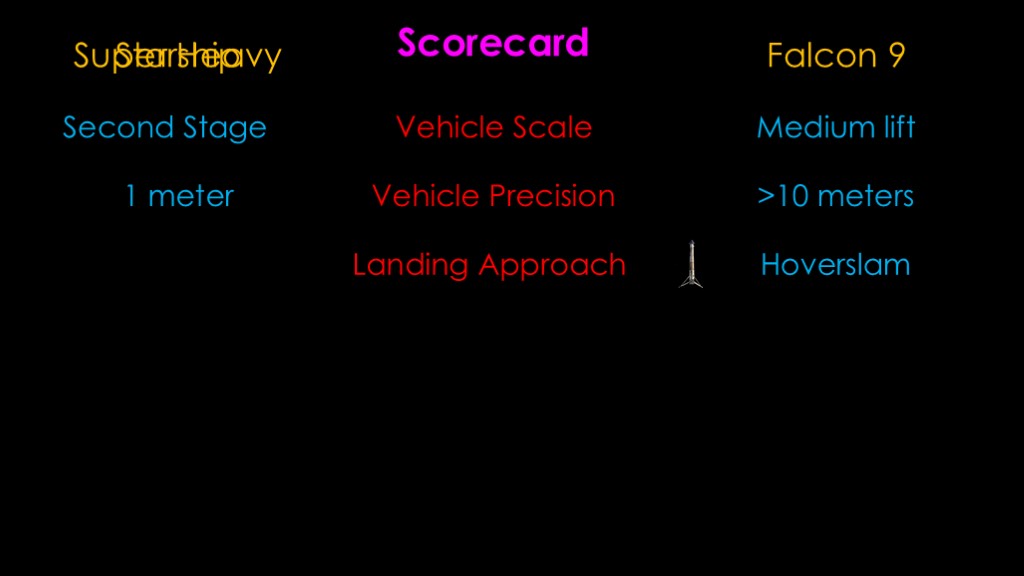
Instead of super heavy, we should be looking at starship.
They rate about the same on vehicle scale and on required vehicle precision, so there's no clear winner for either of those.
Landing approach. We known that Falcon 9 does the difficult Hoverslam...

Starship comes in flat in what is called a "bellyflop" position, and then as it gets close to landing, it performs a landing burn to reorient to a vertical position.
Here's how it looked on the SN15 test flight...
The orbital version will at some point be caught by the same tower than caught super heavy.
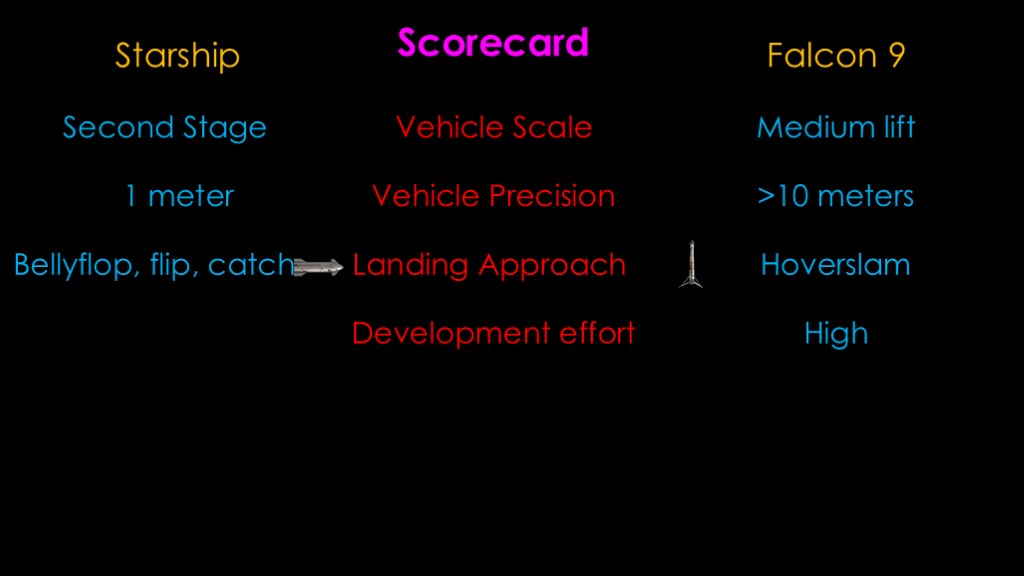
Starship comes in with the bellyflop, flip, and catch approach. Like superheavy it can hover, but the maneuver that it does is much more complex and makes the vehicle design more complex - that's why it took a few flights to figure it out. I think these were roughly equal to develop.
I said that the development effort for Falcon 9 was high. What about starship?
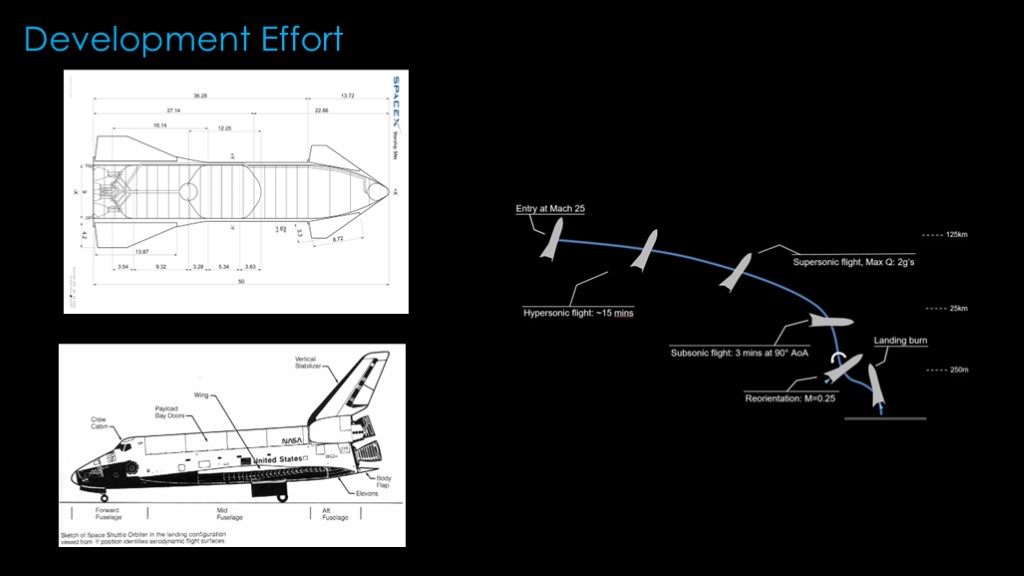
Starship is a weird vehicle that falls sideways using fins for control unlike shuttle which flew like a plane for reentry and had traditional aircraft control surfaces, plus the somewhat weird body flap.
Starship is really more like a capsule than shuttle, but capsules are engineered to be dynamically stable and Starship - like shuttle - requires computer assistance to stay in control.
Nobody had ever built a reentry vehicle like this.
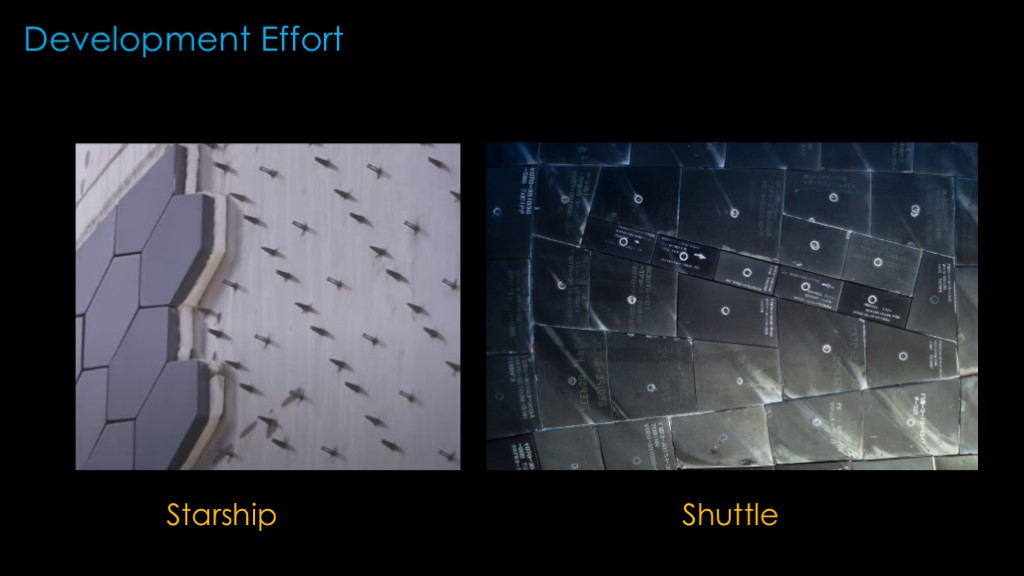
Starship uses heat shield tiles like shuttle, but they are much bigger than shuttles and mechanically attached unlike the glue that shuttle used.
And they have a harder job; the starship tiles are mounted directly on the skin of the propellant tank and that gets extremely cold due to the cryogenic propellants inside, so the Starship heat shield tiles have to deal with a much wider temperature range.
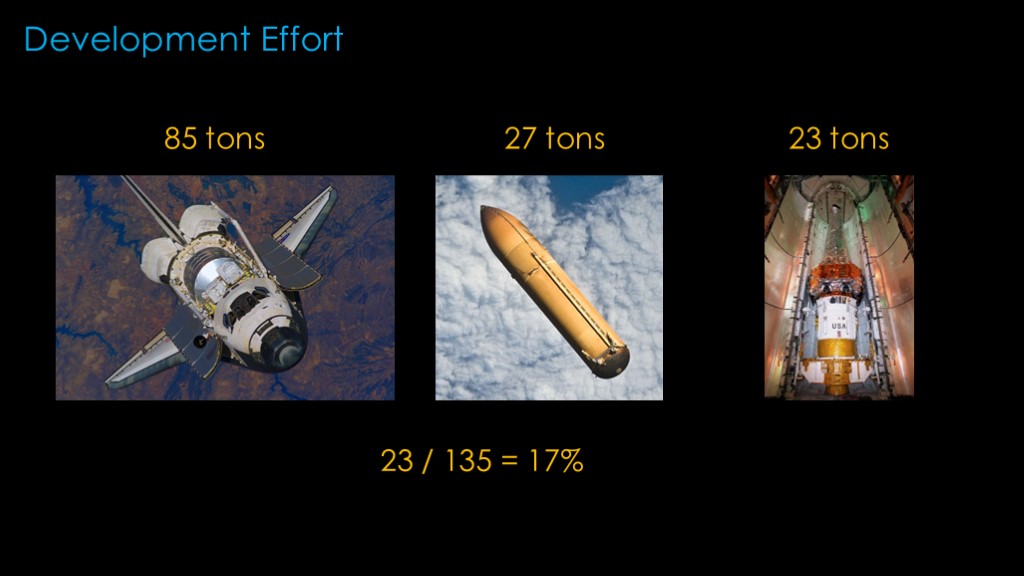
One of the big problems with shuttle is that it was too heavy.
The orbiter was about 85 tons empty and it carried the 27 ton external tank nearly to orbit as well. The heaviest payload it ever carried was the 23 ton Chandra Telescope, which means the total mass to orbit was 135 tons and only 17% of that was payload, and that was with throwing away the very large external tank.
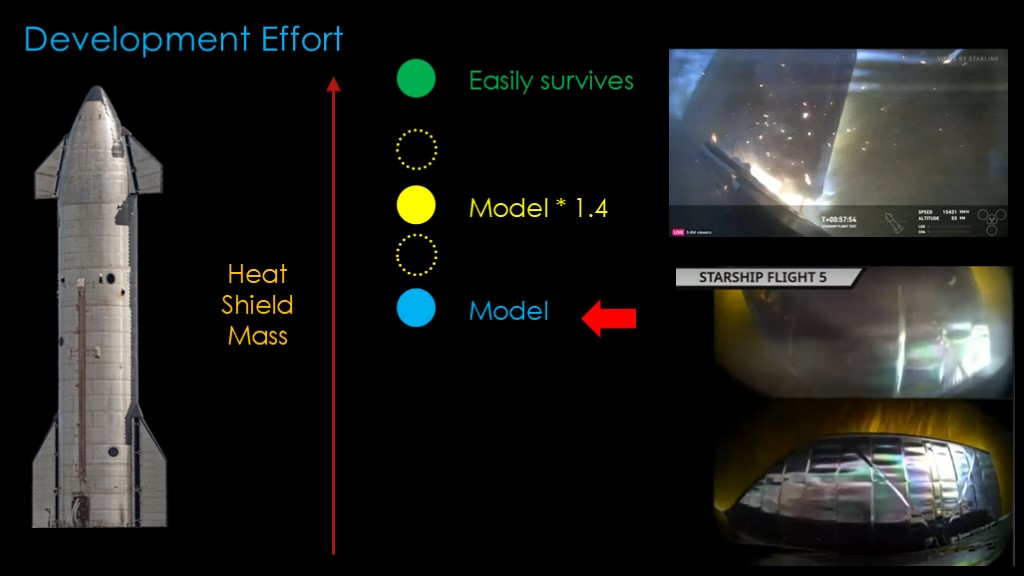
Starship aims to reuse the whole second stage and have a much higher payload percentage, but that is hard to do. SpaceX has taken an interesting approach to optimize the heat shield mass.
They have a mathematical model that tells them how much heat shielding they need to have for the vehicle to barely survive.
If we were building a bridge or a building, we could take what our model tells us and multiply that by a factor of 2 or more, and that would give us a design that is slightly more expensive because of extra materials but will still work.
You can't do that in rockets. If you use a factor of 2 in your design, your rocket will be perfectly safe because it will never reach orbit, but that tends to upset your customers, so you need a smaller safety factor. Rockets that carry humans are generally designed with a 1.4 safety factor, and uncrewed rockets might be down at 1.2.
Starship is designed to have crew, so we'd expect it to be designed with a 1.4 safety factor.
The problem is that your models are never perfect, so your safety factor is only a guess. It might be 1.6, which means that you are wasting mass on more heat shielding than you need and have reduced payload. Or it might be 1.2, in which case you do not have the safety factor you need.
Neither of these are good places to be, so SpaceX makes a different choice - they set the safety factor pretty close to what the model predicts but maybe just a little less, closer to the flamey side of things. They do this to validate that they know the point where there are problems - they are essential testing the failure scenario.
That's where they started in flight 4, and we saw that their model was pretty good - their design was *barely* able to survive though it wouldn't be reusable. That was pretty much the perfect result. And it was no coincidence that they had a camera watching the fin that failed; the camera was added to give the engineering team direct data on the part that they expected to fail.
SpaceX gathered a lot of data and then deployed better tiles in flight 5, and that worked better, but still not quite good enough. The real fix will come in the future when their plan is to move the fins up a bit so that the hinge area has less hot plasma hitting it.
Taking this approach is not a new thing for SpaceX - Falcon 9 landing was also developed with designs that they thought would barely work. It is an uncommon approach in the rocket world as flying prototypes is expensive, but it's a great way to understand the true safety factors of your design.
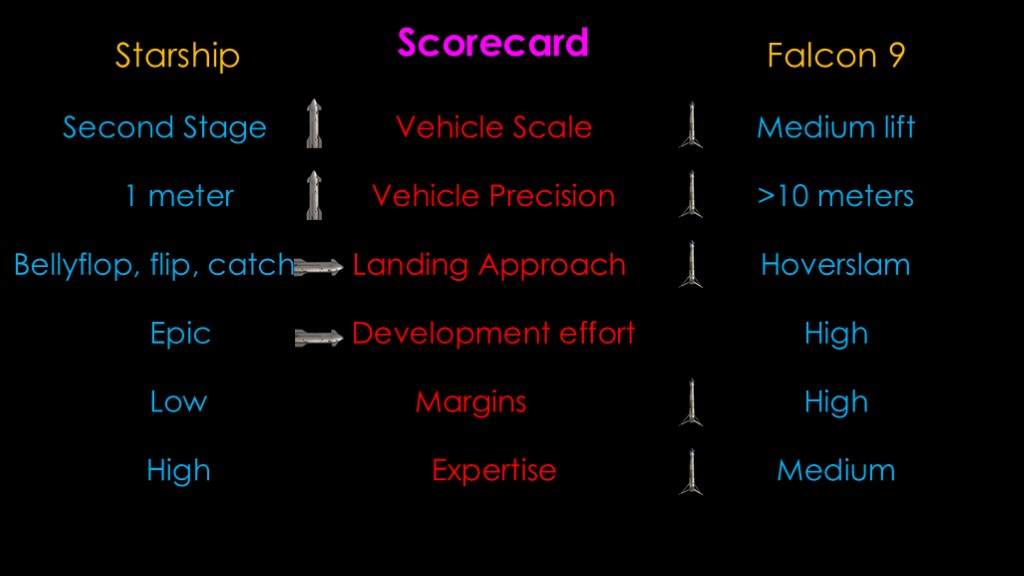
I'd classify the development effort for starship as epic.
All these brand new things being done with a giant reentry vehicle makes it super hard.
And finally, I'll add in the Margins and Expertise measures, which I think are the same as before.
And that's the scorecard comparing the difficulty of starship and falcon 9 reuse.
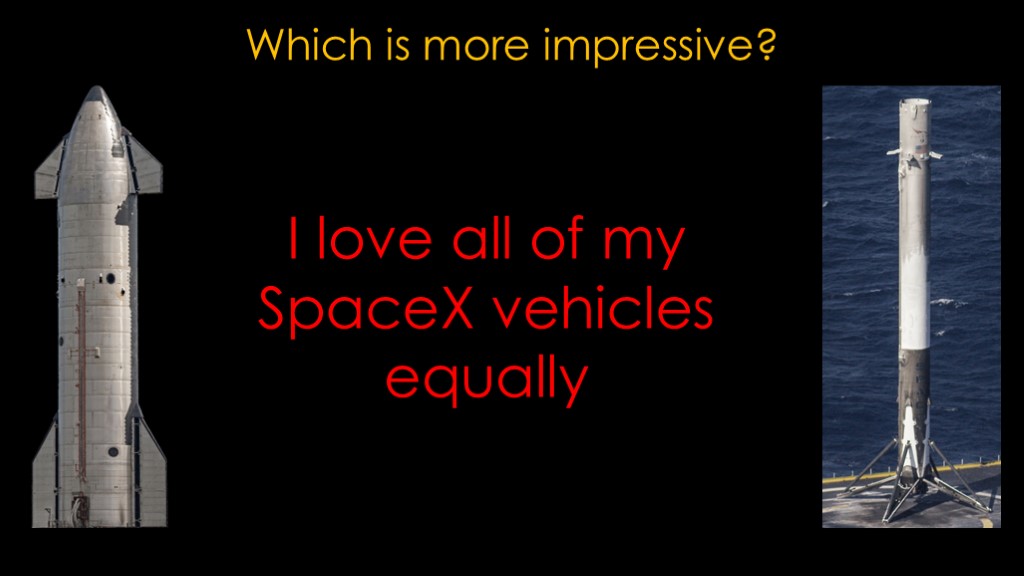
Which is more impressive?
Is it Falcon 9's long road to reusability and the quick establishment of routine reuse?
Or is it starship's demonstrated capability in Flight 4 and Flight 5?
I love all of my SpaceX vehicles equally, but if you have an opinion one way or the other, head to the comments and tell me which one is more impressive.
And then you can write a comment complaining that I'm shamelessly trying to generate a ton of comments for this video.
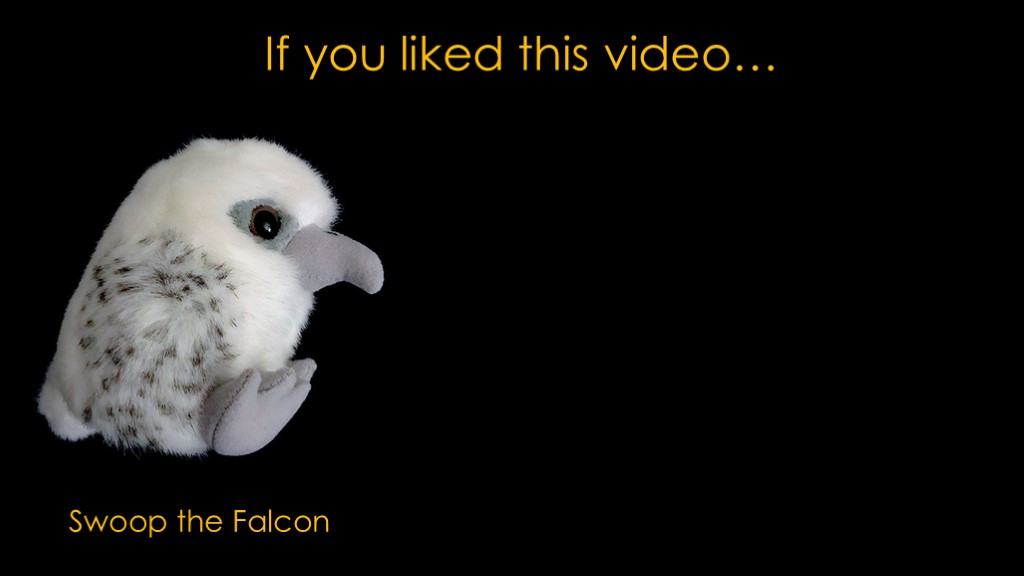
I couldn't find a starship or falcon 9 plush toy, but Puffkins created Swoop the Falcon and Swoop flew under the stage name "Aurora" on Crew 9, in the role of "zero gravity indicator".
Swoop is no longer available from Puffkins but ebay and other sites have an adequate supply, so maybe you could send one to somebody.